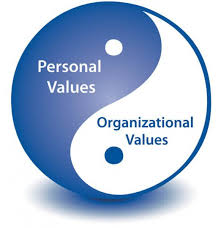Does being a compassionate, servant leader mean that we should keep team members who are not performing well?
Using the approach below, we can often help an under-performing team member to improve and grow.
And, when necessary, we can use the approach to compassionately let someone go without having to fire them.
Addressing Poor Performance
I’ve certainly failed with this balance at both ends of the spectrum.
I’ve been too quick to want to let someone go. And, as I’ve grown more compassionate over the years, I’ve not addressed an issue that really needed to be addressed because I didn’t want to hurt someone’s feelings.
But being compassionate doesn’t mean that we don’t address issues that need to be addressed, like consistently poor performance. Sometimes the most compassionate thing we can do, which would be in the best service of all the stakeholders, is to let someone go.
Are we really serving someone if we allow him or her to consistently do mediocre work? Or, are we actually hurting his or her long-term chances for success?
The Four Pieces of Paper
I learned the approach below from my friend and mentor, John Spence. He calls the approach The Four Pieces of Paper.
Although variations of it can be used with any team member who is underperforming, the approach is very powerful when thoughts come to mind of letting someone go.
When having a conversation with a team member who has been underperforming, we can frame the discussion by saying something like, “I expect really great things from you. Recently, I don’t think what you’ve been doing is up to your standards. What’s going on?”
Then we can let the team member know that we’d like them to have the greatest chance for success for years to come. Not encouraging them to reach their full potential is doing them a disservice.
We then allow them to create a solution, which they will write on four pieces of paper. The team member writes:
- What will they achieve in a given period that they feel adequately makes up for the previous poor performance
- What do they need from us, as their leader, to make that happen
- What should the reward be, within reason, if they hit the mark
- What should the consequence be if they fail
Using this approach, you might find that a team member you thought you would have to fire suddenly turns around simply because you showed them you care about them.
You’ll also find that if they don’t hit the mark, you won’t have to fire them.
They’ll have written, “I should leave,” on the fourth piece of paper because they’ll see that they picked the goal and were given all the support they needed to accomplish it. If they still don’t hit the mark, they’ll almost always see that they are simply not in the right place and voluntarily move on.
As a compassionate, servant leader, we could then help the team member find a position within our organization, or even outside of it, where she or he could thrive.
Please leave me a comment below if you apply these ideas. I’d love to hear about your experience.
______
Did you like what you read?
You can sign up here to get all my posts via our free eZine, which is full of great articles on personal and leadership development.
You’ll also get a $15 eBook for free.
















